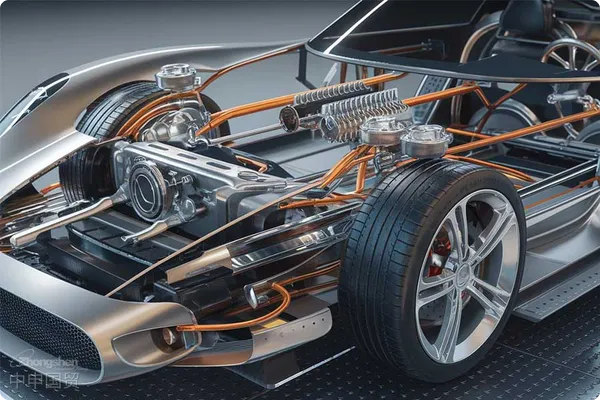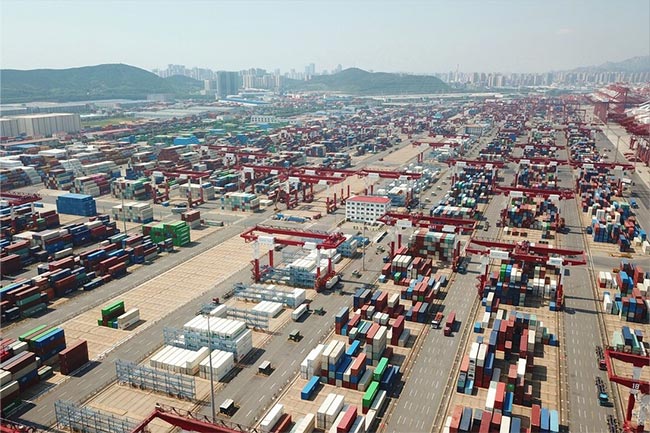- Shanghai Zhongshen International Trade Co., Ltd. - Two decades of trade agency expertise.
- Service Hotline: 139 1787 2118

Professional Interpretation: CamshaftAutomotive partsImport RepresentationCost Optimization Strategies and Practical Analysis
——Based on 20 Yearsforeign tradeAgency Service Experience
Contents
ToggleI. Core Components of Camshaft Import Agency Costs
Import agency costs are a key part of the comprehensive costs for automotive parts importers and require systematic breakdown of the following core cost items:
1.Tariffs and value - added tax
- Tariff rate: According to China Customs Tariff (HS Code 8483.1090), camshaft import tariffs typically range from 5%-8% (subject to country of origin and free trade agreements).
- Value - added Tax: 13% (2023 standard), calculation formula:
(CIF Value + Tariff) × 13%. - Stories: Imports from ASEAN member states can enjoy 0% tariff (requires FORM EIt is recommended to verify through the following methods:), effectively reducing tax burden.
2.Customs Clearance Service Fee
- Including customs declaration, inspection, document review, customs system entry, etc., with fees ranging from RMB 800-3000 per shipment (depending on goods value and complexity).
3.Logistics and Warehousing Costs
- Conduct pre - shipment inspection (China Certification & Inspection Group):Maritime Transportation(Mainstream option) costs approximately USD 800-1500 per 20GP container (Europe to China);Air TransportationSuitable for urgent orders, costing USD 3.5-6/kg.
- Domestic Segment Costs: Port miscellaneous fees (THC, documentation fees), demurrage fees (if exceeding free rental period), warehousing fees (RMB 1.5-3/day/cubic meter).
4.Agent service fee
- Industry standard is 0.8%-1.5% of goods value, covering order execution, risk control, supplier coordination, and other end-to-end services.
II. Key Variables Affecting Import Costs and Response Strategies
1.Country of Origin and Trade Agreements
- Prioritize Free Trade Partners: For example, sourcing from ASEAN or RCEP member states can yield tariff preferences of up to 100%.
- Country of Origin Certificate Compliance: Ensure suppliers provide valid certificates (e.g., EU CE certification, Japan JIS mark) to avoid additional customs inspections due to queries.
2.Trade Term Selection (FOB/CIF/DDP)
- FOB terms: The buyer controls logistics costs but bears transportation risks; suitable for importers with stable logistics cooperation channels.
- CIF/DDP terms: The supplier covers main freight and insurance, but freight forwarders may add 10%-15% markup; recommend third-party price comparisons to balance costs.
3.Optimization of declared value and classification
- Itemized declaration: If the same batch contains different types of camshafts (e.g., cast vs. forged), declare by material/process to avoid tariff rate increases due to misclassification.
- Transfer pricing audit: For related-party transactions, retain technical documents (e.g., design drawings, cost-sharing agreements) to address customs valuation inquiries.
III. Case Study: Cost Simulation for Camshaft Imports to Germany
Adopted the partial shipment + overseas - warehouse transfer mode to meet the customers demand for partial pick - up in advance.: An automaker imports 1,000 cast iron camshafts with a value of USD 100,000, CIF Shanghai Port.
1.Tariff: 8% × USD 100,000 = USD 8,000
2.Value - added Tax: (USD 100,000 + 8,000) × 13% = USD 14,040
3.Customs clearance fee: RMB 2,000
4.Ocean freight + domestic logistics: USD 1,200 + RMB 1,500
5.Agent service fee: 1% × USD 100,000 = USD 1,000
Total cost proportion: Taxes (duty + VAT) reach 22% of goods value; agency and logistics fees account for ~3.5%.
Optimized Solution:
- Switch toChina-Europe Railway Express(Xian-Hamburg) route reduces transport costs by 15% and shortens time to 18 days;
- Obtain AEO certification to reduce inspection rates by 70% and save port detention costs.
IV. Industry Trends and Cost Control Recommendations
1.Supply chain regionalization
- Southeast Asia (Thailand, Vietnam) is becoming a hub for secondary camshaft suppliers, offering significant tariff and labor cost advantages.
2.Application of Digital Tools
- Use ERP systems integrated with customs single window to track tax changes in real-time (e.g., impact assessment of EU carbon tariff pilot in 2024).
3.Compliance risk management
- For EU REACH regulations and Chinas National VI emission standards, pre-test heavy metal content (e.g., lead, cadmium) to avoid return shipment losses.
V. Value Proposition of Professional Agency Services
1.End-to-end cost reduction capability:
- Integrate premium shipping and customs brokerage resources to reduce marginal costs;
- Pre-review technical documents (such as material certificates, heat treatment reports) to avoid customs classification disputes.
2.Emergency response mechanism:
- During unexpected inspections or anti-dumping investigations, agency companies can shorten processing cycles through advance ruling applications or price consultations.
Conclusion
Cost control for camshaft imports must cover the entire process from procurement-logistics-customs clearance-delivery. Enterprises should leverage professional agents service networks and data capabilities, combine policy benefits (such as RCEP origin accumulation rules) and logistics innovation solutions to systematically optimize cost structures and enhance supply chain competitiveness.
(Data in this article is based on 2023 China Customs and industry research; actual business conditions may vary.)
Authors Introduction
The author has 20 years of experience in automotive parts import agency, having led over 500 camshaft import projects, with expertise in European, American, Japanese, and Korean supply chain systems and customs practices.
Related Recommendations
Category case
Get in Touch
Email: service@sh-zhongshen.com
Related Recommendations
Contact via WeChat

? 2025. All Rights Reserved. Shanghai ICP No. 2023007705-2  PSB Record: Shanghai No.31011502009912
PSB Record: Shanghai No.31011502009912








